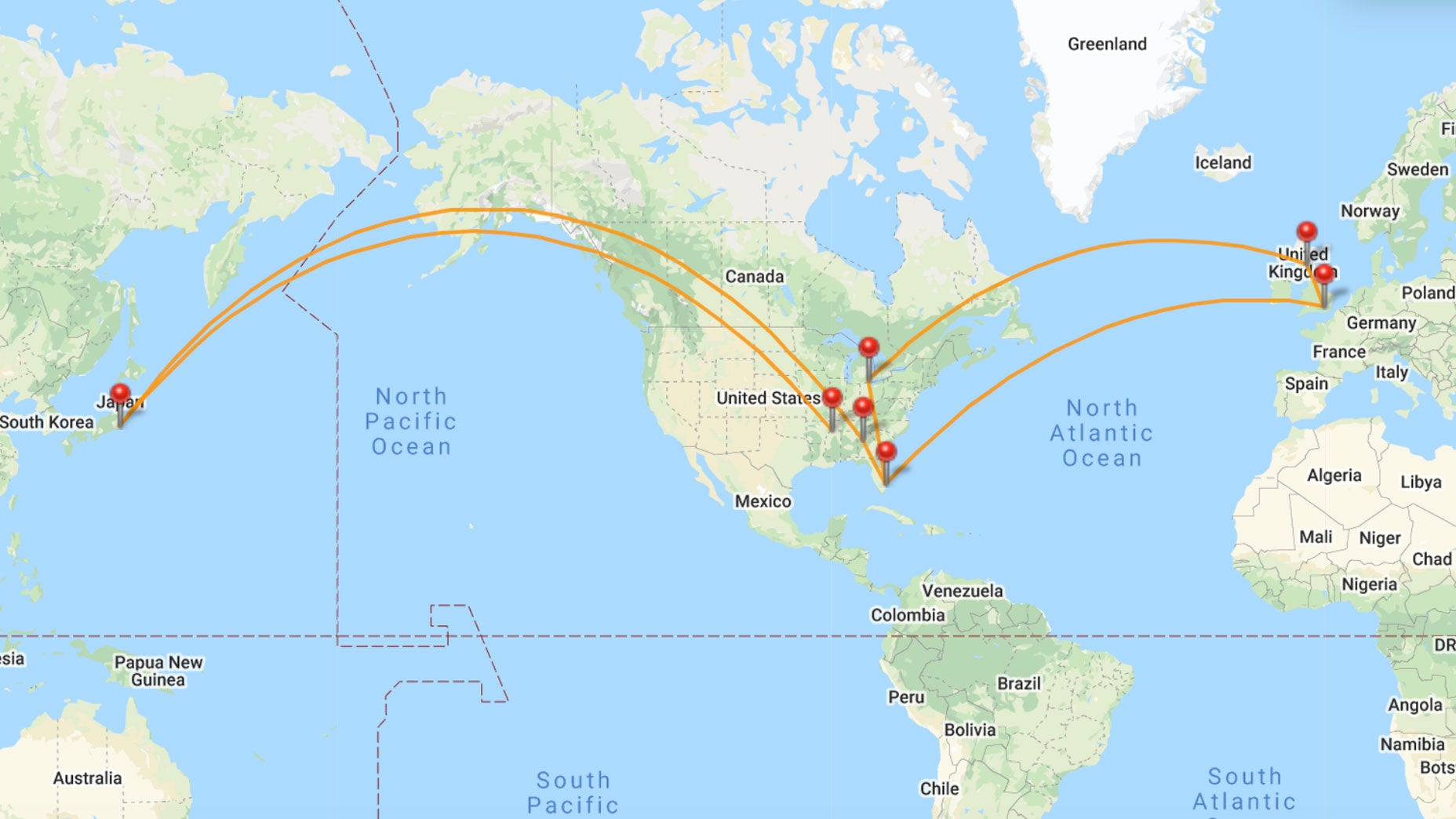
Sand Valley’s Sand Valley course in Wisconsin (Courtesy of Sand Valley/Brandon Carter)
Sand Valley. Just wow, Sand Valley.
Of all the golf destinations to come online in the past decade, Sand Valley and its two 18-hole layouts are among the most prized. Expectations were almost impossibly high the evening I rolled into Nekoosa at the center of the state, now with Golfweek videographer Gabe Gudgel in tow.
Judging from Gudgel’s expression as we surveyed what awaited behind the clubhouse, those expectations would be met. “Are you kidding me?” he asked, slack-jawed, as he caught his first glimpse of David McLay Kidd’s Mammoth Dunes.
Our chance at Mammoth Dunes would have to wait two days. The next morning we teed off up the hill at the resort’s original 18, which shares the name Sand Valley and opened in 2016 with a Bill Coore and Ben Crenshaw design. Sand Valley ranks No. 3 among Wisconsin’s public-access courses and is No. 32 among all modern courses in the U.S.
Sand Valley is a prime example of Coore and Crenshaw’s work: Take a perfect piece of golfing ground, then don’t overdo it and muck things up. The minimalist layout plays through often exposed sand dunes left behind by glaciers, across firm and fast fescue turf to greens that appear as if they were just found lying there, waiting for golfers to amble by. It can be an incredibly difficult art to make it all look so simple, so unbothered – Coore and Crenshaw are modern masters of that approach.

Sand Valley’s Mammoth Dunes in Wisconsin (Courtesy of Sand Valley/Brandon Carter)
Kidd took the even hillier land adjacent to Sand Valley’s original 18 and created the need-to-see-it-to-believe-it Mammoth Dunes, full of extremely wide fairways, quirky bounces, ruggedly beautiful sandscapes and smile-as-you-swing tee shots. Much like he did with Gamble Sands in Washington after a come-to-Jesus moment when he realized he was building courses that were too tough, Kidd packed Mammoth Dunes with fun shots that can’t be found anywhere else.
Mammoth Dunes has a horseshoe green at the short par-4 sixth, an exhilarating downhill and drivable par 4 at the 14th, and even our caddies couldn’t quite agree how to tackle the tee shot across a minefield of humps, hollows and sand traps on the par-5 11th. Centerline bunkers on many holes confound the strategy, even as there is plenty of room on either side. It’s a joyride of hold-my-beer-and-watch-this attempts at shotmaking, sometimes aiming far away from the hole to hit it close. It’s all led to Mammoth Dunes ranking No. 2 among Wisconsin’s public-access courses and No. 29 among all modern courses in the United States.
These are two very different golf courses sitting side by side, and players spend hours sitting around the fire pits behind the clubhouse debating which is better.
“When we build resorts, the hardest thing to do, every time you add a golf course is to make it different and distinguishable from its predecessors,” said Michael Keiser, who developed and owns Sand Valley alongside his brother, Chris. “David Kidd did a fabulous job differentiating his experience from Sand Valley. They’re two wonderful golf courses that are completely different from one another.”

A photo rendering of the 18th hole at The Lido, a new 18-hole layout at Sand Valley in Wisconsin (Courtesy of Peter Flory and Sand Valley)
The offerings won’t end with those two courses, either. Sand Valley is building the Lido, a remake of a top classic course on Long Island that was paved over during World War II. Architect Tom Doak and his Renaissance Golf team have gone to painstaking lengths to bring that C.B. Macdonald layout back to life exactly as it was, only this time in Wisconsin, with the help of golf historian Peter Flory. After its planned opening in 2023, the Lido will be a private club that allows resort guests to play at certain times, surely adding to the buzz about the resort.
Doak also has drawn up the routing for a non-traditional layout named Sedge Valley, with plans for it to play not much beyond 6,000 yards with a par of 68. Construction atop a giant dune has been delayed as Doak’s team works on the Lido, and a working schedule and opening date have not been announced. Again, bet on the buzz to rise when it does.
But don’t assume it’s only about the golf courses. Sand Valley has a unique feel, an energy that would be difficult to replicate. Michael and Chris Keiser are sons of Mike Keiser, the founder of Bandon Dunes Golf Resort in Oregon, which redefined the vibe of an American destination golf resort 20 years ago. Sand Valley is similar in that it has an energy, but the vibe in Wisconsin is detectably different that at Bandon Dunes.

Sand Valley food truck in Wisconsin (Courtesy of Sand Valley/Brandon Carter)
Like Bandon, Sand Valley Golf Resort has a fun par-3 course where people are invited to cut loose, even to ditch their shoes and play barefoot. Restaurants, bars, fire pits – there are plenty of similarities with Bandon Dunes. But Sand Valley is more compact, with most guests staying closer to the clubhouse in perfectly suited accommodations overlooking the Sandbox short course. Guests encounter each other more often, and there’s a specific buzz. You can feel it at the food truck Sand Valley added, serving burgers, brats and beer to players wrapping up on the Sandbox. And it’s there on the patio and lawn behind the clubhouse.
“It’s authentic,” Michael Keiser said. “That’s the core of our vibe here. Visually, it’s rough and rugged. … and that creates a relaxed feeling because things don’t always have to be rigid. It’s just casual, laid back, fun.”








